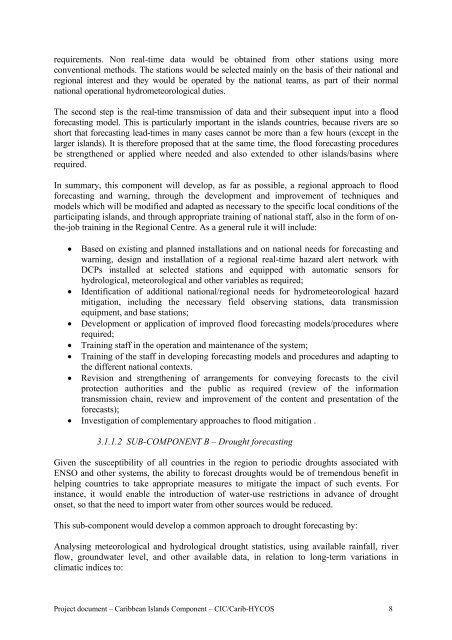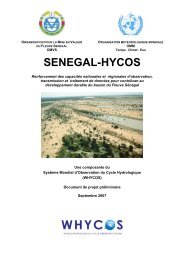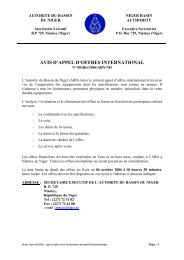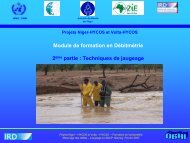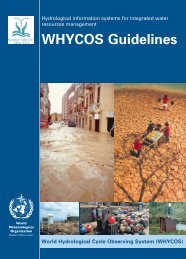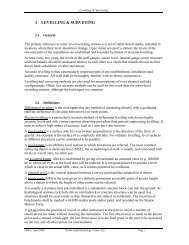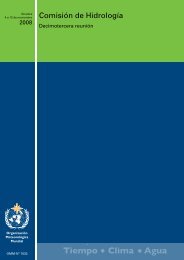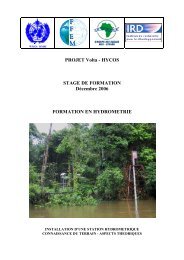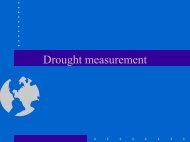CARIB-HYCOS - WHYCOS
CARIB-HYCOS - WHYCOS
CARIB-HYCOS - WHYCOS
Create successful ePaper yourself
Turn your PDF publications into a flip-book with our unique Google optimized e-Paper software.
equirements. Non real-time data would be obtained from other stations using moreconventional methods. The stations would be selected mainly on the basis of their national andregional interest and they would be operated by the national teams, as part of their normalnational operational hydrometeorological duties.The second step is the real-time transmission of data and their subsequent input into a floodforecasting model. This is particularly important in the islands countries, because rivers are soshort that forecasting lead-times in many cases cannot be more than a few hours (except in thelarger islands). It is therefore proposed that at the same time, the flood forecasting proceduresbe strengthened or applied where needed and also extended to other islands/basins whererequired.In summary, this component will develop, as far as possible, a regional approach to floodforecasting and warning, through the development and improvement of techniques andmodels which will be modified and adapted as necessary to the specific local conditions of theparticipating islands, and through appropriate training of national staff, also in the form of onthe-jobtraining in the Regional Centre. As a general rule it will include:• Based on existing and planned installations and on national needs for forecasting andwarning, design and installation of a regional real-time hazard alert network withDCPs installed at selected stations and equipped with automatic sensors forhydrological, meteorological and other variables as required;• Identification of additional national/regional needs for hydrometeorological hazardmitigation, including the necessary field observing stations, data transmissionequipment, and base stations;• Development or application of improved flood forecasting models/procedures whererequired;• Training staff in the operation and maintenance of the system;• Training of the staff in developing forecasting models and procedures and adapting tothe different national contexts.• Revision and strengthening of arrangements for conveying forecasts to the civilprotection authorities and the public as required (review of the informationtransmission chain, review and improvement of the content and presentation of theforecasts);• Investigation of complementary approaches to flood mitigation .3.1.1.2 SUB-COMPONENT B – Drought forecastingGiven the susceptibility of all countries in the region to periodic droughts associated withENSO and other systems, the ability to forecast droughts would be of tremendous benefit inhelping countries to take appropriate measures to mitigate the impact of such events. Forinstance, it would enable the introduction of water-use restrictions in advance of droughtonset, so that the need to import water from other sources would be reduced.This sub-component would develop a common approach to drought forecasting by:Analysing meteorological and hydrological drought statistics, using available rainfall, riverflow, groundwater level, and other available data, in relation to long-term variations inclimatic indices to:Project document – Caribbean Islands Component – CIC/Carib-<strong>HYCOS</strong> 8


